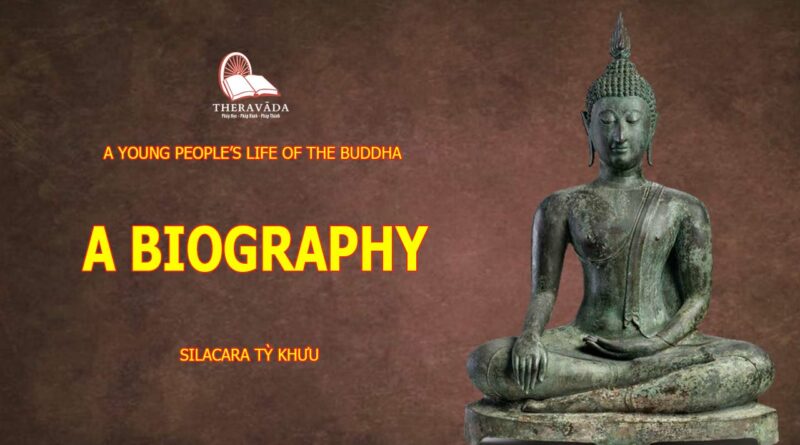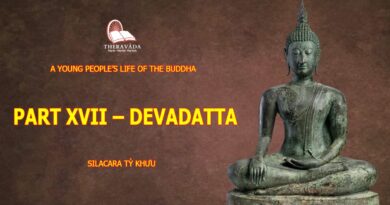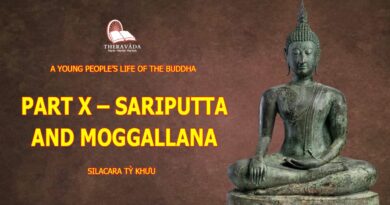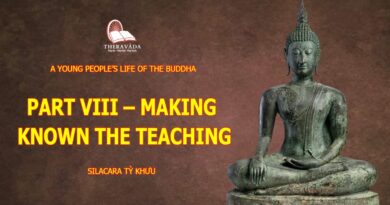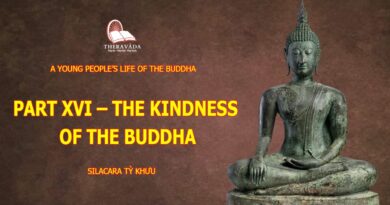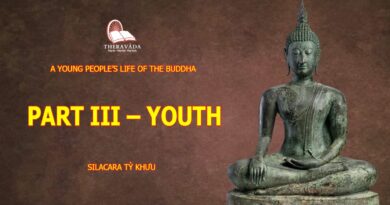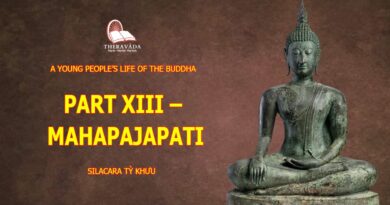A YOUNG PEOPLE’S LIFE OF THE BUDDHA: A BIOGRAPHY
In 1906 a Scotsman in his thirty-fifth year, known as J.F. McKechnie, was admitted to the Sangha by the Thera U Kumara at Kyun Daw Gone Kyaung (Temple), Kemmendine, Rangoon, Burma. He was given the Bhikku’s name of Silacara.
The new monk had come to the country about the beginning of this century, having, whilst in Glasgow, read about Buddhism in a copy of the magazine //Buddhism// which he found in the public library, and answered an advertisement of its editor the Bhikkhu Ananda Metteyya (Alan Bennett, in lay life) for one with literary ability to assist him in the editorial work in Rangoon. McKechnie remained with the British Buddhist monk until the magazine ceased publication. Then, prior to his own entering the Sangha as noted above, he taught for a year in the Buddhist boys’ school of Mme Hla Oung.
The future Bhikkhu was born in Hull, Yorkshire, on October 22nd, 1871. His father was a famous baritone singer, Sir Charles Santley, and his mother was Caroline Mavis. After the years of schooling, till he was 21, he worked as apprentice to the trade of Stock-cutter in a clothing factory, emigrating therefrom to America to work for four years on a fruit and dairy farm.
The Bhikkhu Silacara worked untiringly, writing, preaching, traveling. He once went on a mission to Sikkim, on the Maharajah’s invitation, but the mission bore hardly any fruit owing to the point of view of the lamas who thought that pure Buddhism would be corrupted, if in the hands of the ignorant peasant. He broke down in health, contracting nervous asthma, complicated with heart trouble, and on the advice of the German Buddhist Dr. P. Dahlke, left the robes and for England late in 1925. Here he worked with the Anagarika Dharmapala at the Mahabodhi Society’s British branch, lecturing and editing the //British Buddhist//. His health suffered again and in 1932 when he had to leave London to live in Surrey. But he never ceased to work, for he wrote to Buddhist Magazines in the country, in Ceylon, Burma, Germany, etc.
During World War II his little retreat Wisboro Green having been sold, he entered an Old Persons’ Home at Bury, where he, who had led the austere life of a Buddhist monk, bore the hard way of a state charitable institution with equanimity until his death three years ago.
Of the books on Buddhism which he wrote, those perhaps best known to Ceylon Buddhists are //The Four Noble Truths//, //The Eightfold Path//, //Kamma//, //Lotus Blossoms//. In the early twenties Ceylon readers of the //Buddhist Chronicle//, a paper started by Mr. P. de. S. Kularatne, the Principal of Ananda College, Colombo, were greatly encouraged by the vigorous contribution which the Bhikkhu made regularly. The interest of these articles was heightened specially by the fact that there was a controversy going on at that time, the leader on the Buddhist side being American Buddhist Scholar of Mahayana, Dr. W. Y. Evans-Wentz //Buddhist Annual of Ceylon//.
The Bhikkhu also contributed a number of articles to the //Buddhist Annual of Ceylon// an illustrated magazine of a high order which the firm Messrs. W. E. Bastain & Co. of Colombo were publishing with great acceptance to places and people all over the world wherever Orientalia found welcome, and these were a formidable tally. For this Firm he specially wrote the //Young People’s Life of the Buddha// the popularity of which remains undimmed throughout the decades in which it is being re-printed.
Colombo, 15th January 1953

